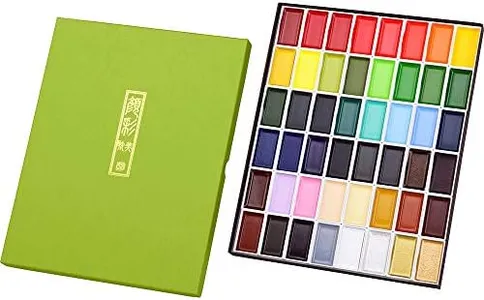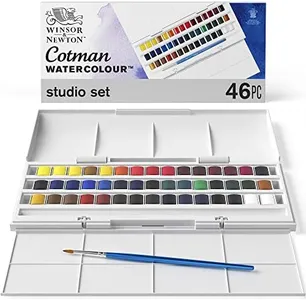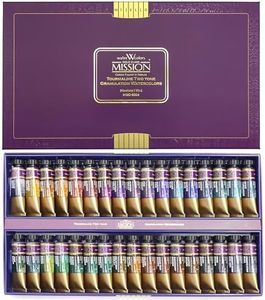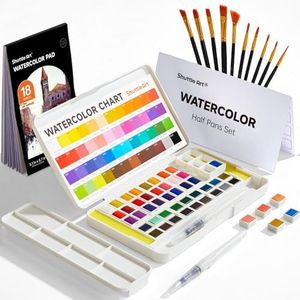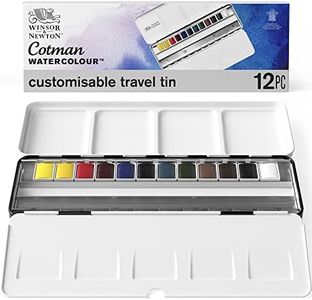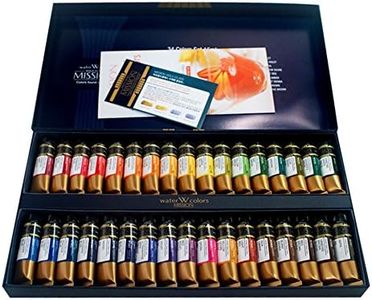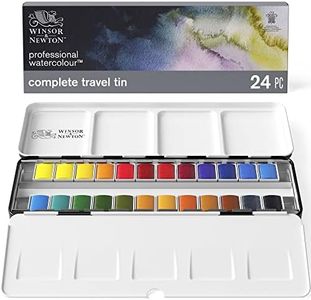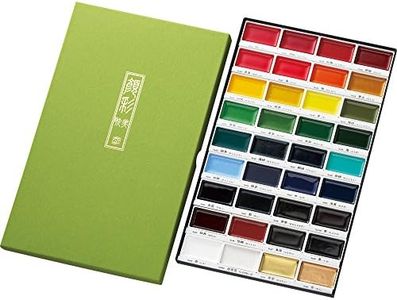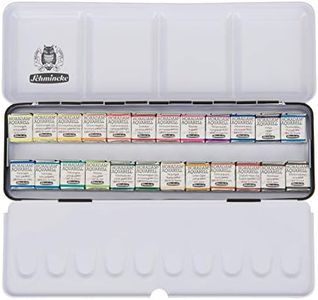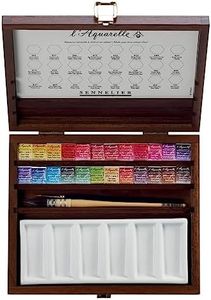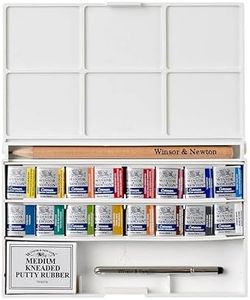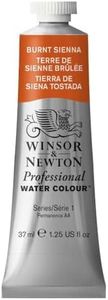We Use CookiesWe use cookies to enhance the security, performance,
functionality and for analytical and promotional activities. By continuing to browse this site you
are agreeing to our privacy policy
10 Best Watercolour Paints
From leading brands and best sellers available on the web.Buying Guide for the Best Watercolour Paints
Choosing the right watercolour paints can make a huge difference in your painting experience, whether you're a beginner or looking to upgrade your set. It's important to consider how you'll be using the paints, the type of effects you want, and your frequency of painting. Understanding some key specifications will help you find paints that match your needs and will bring the colours in your art to life.Pigment QualityPigment quality determines how vivid, bright, and lightfast your colours will be. Professional or artist-grade paints have higher-quality pigments with less filler, resulting in richer colours that last longer without fading. Student-grade or beginner sets may have more filler, making colours less vibrant. If you're just exploring watercolours or painting casually, student-grade is often enough. If you want more intense colours and your work to last, look towards artist-grade options.
TransparencyTransparency refers to how much light can pass through the paint, letting the underlying paper or colours show through. Watercolours are known for their transparent quality, which allows for layering and subtle effects. Some paints are more opaque and cover up what’s beneath. If you like delicate layering, seek transparent paints. If you want bolder, more covering results, slightly opaque paints might suit you better.
LightfastnessLightfastness is how resistant the paint is to fading when exposed to light over time. A high lightfastness rating means your paintings will retain their colour longer, which is important for art you want to display or keep for years. Lower lightfastness might be okay for practice work or sketchbooks. Consider high lightfastness if you care about your artwork lasting a long time.
Colour RangeThe colour range is the variety of colours available within a set or brand. Larger ranges give more flexibility, but basic sets often cover most needs and can be mixed to create new shades. Think about what you like to paint; landscapes, portraits, and abstract art may require different types of colours. Beginners can start with a smaller set and mix colours, while advanced users may prefer bigger ranges for convenience and creativity.
Form: Tubes vs. PansWatercolours come in tubes (wet paint) and pans (dry blocks). Tubes are easier for mixing large amounts of paint and tend to be more vibrant when wet. Pans are portable, less messy, and great for quick sketches or travel. If you paint mainly at home or need more paint for larger works, try tubes. If you value portability and convenience, pans are a great choice.
Rewetting AbilityThis tells you how easily a dried paint can be reactivated with water. Some paints, especially higher quality ones, rewet quickly and easily, while others may need more effort to get rich colour again. If you prefer to work at a relaxed pace or want to revisit old colour in your palette, focus on paints known for good rewetting ability.
